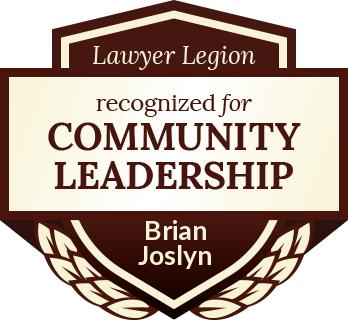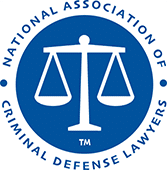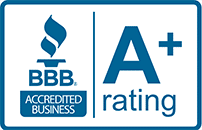Ohio Judicial Release Lawyers
The prison doors may close, but all hope is not lost. In 2009, Ohio revised Section 2929.20 of the Ohio Code titled, “Sentence Reduction through Judicial Release,” more commonly referred to as “judicial release.” This statute permits eligible Ohio offenders to petition their sentencing judges (or successors) for release to parole after serving a certain percentage of their sentences.
Experienced Ohio Attorneys Help Petition for Early Release from Prison
Ohio’s judicial release statute is extensive, and it contains multiple exceptions, application requirements, and mathematical sentencing nuances. Despite these legal complexities, petitions for judicial release are often “one and done” type applications. They cannot be appealed, and an Ohio judge may even prohibit an incarcerated offender from filing a second petition after the first is denied. For this reason alone, hiring an experienced Ohio judicial release attorney is essential.
There is little room for error when petitioning for judicial release, and speaking with an experienced Ohio judicial release attorney at the Joslyn Law Firm can make a vital difference. To schedule your free, confidential judicial release case review, call our top-rated Ohio collateral relief attorneys today at (614) 444-1900 or contact us online.
Ohio Judicial Release Information Center
Here, you can find more in-depth information about
- Understanding Ohio Judicial Release
- Eligibility Requirements for Judicial Release
- Judicial Release Considerations
- Most Common Errors and Misconceptions about Judicial Release
- Applying for Judicial Release in Ohio: Procedures & Requirements
- Processing Timeline for Ohio Judicial Release Applications
- Appeals, Denials, and Re-Application for Judicial Release
1. Understanding Ohio Judicial Release
Judicial release is the process by which an offender serving time for an Ohio criminal conviction may petition the sentencing court for early release after serving a portion of the original sentence. Unlike petitions for habeas corpus, which allege a sentence is illegal or erroneous, petitions for judicial release ask whether the sentence served thus far has accomplished its purpose. Judges often look to the genuineness of an offender’s remorse, the original circumstances of the offense, the likelihood of recidivism, the victim’s wishes, and the offender’s prison record when reviewing a petition for judicial release. No offender has the “right” to judicial release, and granting the same is left to the sole discretion of the sentencing court.
Whether you’re eligible for judicial release in Ohio depends on a number of factors, including:
- How much time you’ve served
- The tribunal that imposed your sentence
- The criminal offenses for which you’ve been sentenced
- Whether one or more of your convictions carried a mandatory minimum sentence
- How much time you’ve been sentenced to serve, and
- Whether you’ve previously petitioned for judicial release
Generally, incarcerated offenders request judicial release via a written motion submitted to the sentencing court. This motion should certify an offender’s eligibility for release and contain evidence that an offender’s release would be in the best interest of the community, his or her family, and the justice system. Once a petition is submitted, the sentencing judge has the discretion to grant a hearing on the motion whereby an offender and/or his attorney, the prosecutor, and the victim, if any, can present arguments for or against early release. If judicial release is granted, the remainder of an offender’s sentence is “suspended,” and the offender is released from prison to “community control.” Successful completion of an offender’s community control term waives the remaining sentence.
2. Eligibility Requirements for Judicial Release
Many offenders have a single chance to petition for judicial release. There is no guarantee incarcerated offenders may file a second petition if the first is rejected. It is essential, therefore, that those seeking judicial release ensure they are eligible to file a motion under Section 2929.20 of the Ohio Code. While sentencing judges have substantial discretion to review a petition for judicial release, they may not grant release to ineligible offenders.
An offender may only file for judicial release if all of the following are true:
- He or she was sentenced in Ohio state court for Ohio state offenses. Federal offenders are not eligible to petition for judicial release in Ohio.
- The sentence includes a “non-mandatory” prison term.
- The offender is not imprisoned for a felony related to and committed while he or she held public office in Ohio.
- The motion is “timely.”
Notwithstanding these requirements, judicial release may be granted at any time during incarceration if an offender (1) is not serving a life sentence, (2) does not pose a risk to the public, and (3) is officially certified by the Director of Rehabilitation and Correction as someone who is “in imminent danger of death, is medically incapacitated, or is suffering from a terminal illness.”
Whether a motion for judicial release is “timely” depends on the length of an offender’s aggregate sentence. Otherwise eligible offenders serving a non-mandatory sentence may file for judicial release as follows:
- If the sentence imposed is for less than two years, at any time after the offender is delivered to prison.
- If the sentence imposed is between two years and five years, an offender may file a petition after serving at least 180 days in prison.
- If the sentence is exactly five years, an offender may file after serving at least four years imprisonment.
- If the sentence is more than five years but not more than ten years, after the offender has served at least five years.
- If the sentence is greater than ten years, at any time after at least one half of the total sentence is served. For example, an offender sentenced to a non-mandatory 30 years may file for judicial release after serving 15 years of his sentence.
Offenders subject to a mandatory minimum sentence should consult with an experienced Ohio collateral relief attorney before filing a petition for judicial release. You must have served at least your mandatory minimum sentence before the above timing guidelines are applied to your remaining non-mandatory minimum sentence.
3. Judicial Release Considerations
Once a petition for judicial release is accepted for meritorious review, the sentencing judge generally considers a variety of factors before ruling on the motion. These factors include those considered during the original sentencing pursuant to Ohio’s criminal seriousness and recidivism statute:
- The age and condition of the victim, including the physical, economic, and mental injuries suffered
- If the crime involved a breach of public trust
- The likelihood that the offender’s conduct and public position would influence others
- The relationship between the offender and the victim and whether this facilitated the offense
- Whether the crime was committed “for hire”
- Whether the offender was a member of an organized criminal group
- Whether the crime was motivated by prejudice or hate based on the victim’s race, background, gender, sexual orientation, or religion
- Whether the offense was committed by or against the parents of children, and the children witnessed the crime
- Whether the victim incited or facilitated the offense
- Whether the offender was provoked
- Whether there was criminal intent to harm
- Any mitigating factors surrounding the offense that did not amount to a valid defense during sentencing
- Whether the offender was on community control/probation when the current offense was committed
- The offender’s previous adult and juvenile criminal record or lack thereof
- Whether the offender is suffering from PTSD after military service
- Whether the offender does and has shown genuine remorse
The reviewing judge must also permit the prosecuting attorney, victims, and anyone with relevant information an opportunity to be heard if a hearing is granted. The reviewing judge must consider (1) the independent victim impact statement, (2) the offender’s institutional summary report, which may include information about the offender’s behavioral violations, rehabilitative activities, education, and vocational training while incarcerated, and (3) any written statement submitted by a party concerning “the effects of the offender’s crime or crimes, the circumstances surrounding the crime or crimes, the manner in which the crime or crimes were perpetrated, and the person’s opinion as to whether the offender should be released.” Such statements may include those submitted by the offender’s and the victim’s family, friends, and co-workers.
4. Most Common Errors and Misconceptions about Judicial Release
Judges have substantial discretion in determining whether to grant judicial release. However, they are not permitted to do so if you don’t meet the statutory prerequisites for relief. Inmates, their friends, and their families are understandably eager for relief and release. This often results in premature applications for judicial release or pleas for judicial release by ineligible offenders. If a petition for judicial release is denied “with prejudice,” you’re forever prohibited from filing a second petition. Do not file a motion for judicial release, therefore, unless you’re legally eligible to do so.
Some of the most common filing errors about judicial release in Ohio include:
- Filing a petition before you’re eligible under the statute. The sentencing judge does not have the legal authority to grant release before your eligibility period.
- Filing a petition for medical or “imminent” danger release without proper certification from the Department of Corrections. Judges are bound by the obligations of the judicial release statute, which means petitioners must obtain the proper medical reports and certifications before filing a petition for judicial medical release.
- Requesting release without technical eligibility hoping the judge will waive the technicality. Again, judges are bound by the requirement of the judicial release statute. They do not have authority to waive technical requirements, and requesting they do so may result in loss of an opportunity to re-file a proper petition.
- Requesting judicial release from another tribunal. While there are procedures by which state offenders may request relief in federal court, appeal their sentences, or petition the governor for pardons, petitions for judicial release must be filed with the sentencing court. If available, said petitions must also be reviewed by the original sentencing judge. You may not claim “bias” or request another judge or tribunal review a petition for judicial release.
- Believing you are entitled to a rehearing or appeal. This is not the case. If you’re denied judicial release after a hearing on your petition, you are not permitted to request future non-medical release or a rehearing.
Hiring an experienced Ohio judicial release attorney is essential to avoid filing an erroneous petition and potentially wasting your one chance for early release.
5. Applying for Judicial Release in Ohio: Procedures & Requirements
Assuming eligibility, petitions for judicial release are filed with the clerk of the court in the county where you were convicted. An attorney or local non-profit may provide you with the proper template, but your submission must include a motion requesting judicial release and a hearing, a memorandum (essay) in support of your request, and any documentary evidence available to support your claims. Your motion for release should not be sent directly to the judge, the public defender’s office, or your former attorney, but the prosecutor’s office must receive a copy. The technical filing requirements, including formatting, copying, and mailing requirements, differ by county. You should always have an experienced Ohio judicial release attorney review your local requirements before submitting your motion.
The Ohio Public Defender’s Office recommends petitioners highlight, to the extent applicable, certain factors Ohio courts find particularly relevant during judicial release proceedings. These factors include:
- That the crime for which you are incarcerated did not involve threatening and/or causing harm to another person or property, and if harm was caused, it was unpredictable and unintentional
- The crime was unique and the circumstances are not likely to reoccur
- You were a law-abiding citizen prior to committing the offense and have an otherwise clear criminal record
- That positive changes have occurred during incarceration including successful rehabilitation, restitution, schooling, and vocational training
- Evidence of any hardships your imprisonment is causing your family and how your release may benefit society, i.e., you now have a useful vocational certification or your sons would benefit from your parental influence before graduating from high school
- Evidence of genuine remorse, including a guilty plea, promised restitution, apology letters to the victim, and/or remorseful journal entries compiled before you were eligible for judicial release
Because petitioners are asking the sentencing judge to reconsider the original sentencing decision, it’s extremely important to highlight any positive changes since sentencing. No judge wants to admit she imposed an incorrect sentence, but she may be induced to release you after successful rehabilitation, treatment, and vocational training.
6. Processing Timeline for Ohio Judicial Release Applications
Petitions for judicial release must be adjudicated according to a specific timeline to avoid unnecessary anticipatory distress to the affected parties. Once a petition is accepted for filing, the judge has sixty (60) days to either grant a hearing or deny the motion. If the court decides to grant a hearing on the motion, the hearing must be held no more than 180 days after the motion was filed. The court then has ten (10) days from the date of the hearing to make its decision, but many judges rule on the motion during the hearing itself. If the motion is granted, the offender is released to community control (probation) for one to five years and the remaining sentence is suspended.
7. Appeals, Denials, and Re-Application for Judicial Release
Judicial release motions denied without a hearing may also be denied “without prejudice.” Unless a petition states it is denied “with prejudice,” then it is denied “without prejudice.” This means an offender may file a second petition for judicial release. Judges will often deny petitions without a hearing but “without prejudice” when the motion is untimely, incomplete, or technically deficient. This permits the offender to consult with an experienced Ohio judicial release attorney to perfect and re-file the petition. However, petitions denied after a hearing are always denied “with prejudice.” This means you may not file a second petition for judicial release. Further, you may not appeal a denial of judicial release in Ohio. This is not considered an appealable order, and the appellate court will reject an appeal on technical grounds. There is seldom a more important hearing for which petitioners need a top-rated Ohio judicial release defense attorney from the Joslyn Law Firm.
The Benefits of Hiring an Ohio Judicial Release Attorney from the Joslyn Law Firm
Our compassionate Ohio defense attorneys can not only prepare and defend your petition for judicial release, but they can also protect your rights by preventing and perfecting erroneous filings. Don’t waste your chance for release before taking advantage of our free case review and analysis. Consulting with an experienced Ohio judicial release attorney at the Joslyn Law Firm can mean the difference between prison and probation.
Incarceration is not the end for our clients at the Joslyn Law Firm. We diligently review every client’s case for potential avenues of relief, including motions for judicial release, criminal appeals, petitions for habeas corpus, and requests for executive pardons. Contact our zealous prisoner rights lawyers today to schedule your free, confidential judicial release case review by calling (614) 444-1900 or contacting us online.














